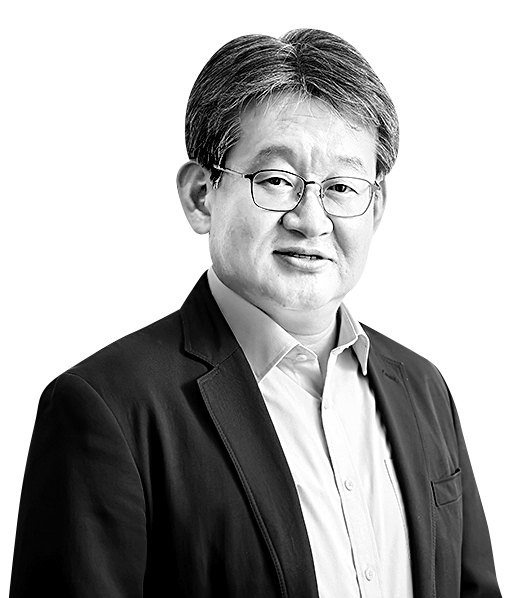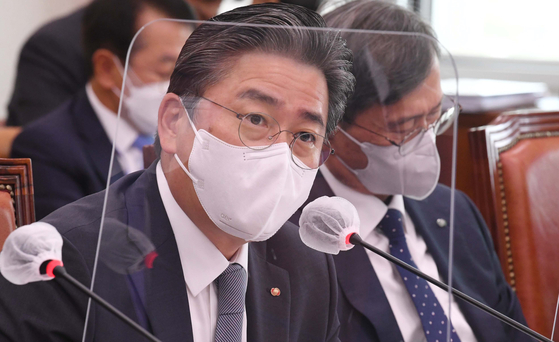The brutal history of Kepco CEOs
Published: 16 May. 2023, 20:04

Suh Kyoung-ho
The author is an editorial writer of the JoongAng Ilbo.
The chief executive of the Korea Electric Power Corp. (Kepco), the standard-bearer of Korean public utilities, is an honorable title. The seat usually goes to a vice-ministerial figure from the Ministry of Trade, Industry and Energy. The largest public enterprise commands assets of 235 trillion won ($176 billion) and 23,000-plus employees.
The company has no say over the price and supply of electricity. Due to the outdated rate system that usually falls under political sway, the company cannot raise utility rates to maintain a profit. That’s why its balance sheet fluctuates from big surpluses to deficits depending on international oil prices. Even a highly qualified professional corporate manager cannot prove their true skills due to indomitable external factors.
Under the Lee Myung-bak presidency, Kepco got its first CEO from the private sector. Former LG Electronics Vice Chairman Kim Ssang-soo sparked high expectations that he would bring an innovative spirit to the public sector. Although he demanded “passion” from employees, he could not prevail over the rate system that sells electricity below the production cost. Kepco suffered its first annual loss in 2008. The company was in the red throughout his term. Kim was sued by minority shareholders angry at poor stock prices. “I hope I would make the last CEO of this sort,” he confessed before leaving the post in disgrace. He was succeeded by another private-sector CEO, Kim Joong-kyum from Hyundai Engineering & Construction. He stepped down just a year later after battling with the government to raise the power rates.
The next CEO, Kim Jong-gap, had headed chipmaker Hynix (now SK hynix) and Siemens Korea after resigning as the vice minister of trade and energy. He was known for successfully restructuring and turning around Hynix. In 2018, he famously said, “As tofu prices did not go up despite the rise in the price of imported beans, tofu [the finished product] is being sold cheaper than the bean [raw material].” He likened the power rate to tofu prices and fuel costs to bean costs. He also argued for the rationalization of utility prices according to import cost, as Korea relies almost entirely on imported fuel sources.
Cheong Seung-il, who recently stepped down as Kepco CEO, had served as president of Korea Gas Corp. and energy vice minister before that. He was appointed to head Kepco in June 2021, when the public utility company faced its worst times. Kepco incurred a record 6 trillion won in losses in 2021, which ballooned to 33 trillion won last year. He was dubbed the best-qualified rescue pitcher for Kepco in crisis. He had overseen energy industry policy for two years, and as the director-general and director of the energy ministry, he successfully solved highly sensitive issues like the construction of a radioactive waste disposal system and high-voltage power transmission towers in Miryang, South Gyeongsang by persuading concerned parties.
As the vice energy minister, he persuaded the presidential office to adopt a flexible electricity rate system, under which the billing system is adjusted every three months to reflect the price changes in international raw materials and market conditions, as long demanded by the ministry and Kepco. But the government allowed a deferment of the flexible system if raw material prices sharply jump over a short period. The political decision has brought havoc for Kepco.
Chung came under heavy pressure to resign as he was appointed under the previous liberal government and appeared less aggressive in restructuring. Few bureaucrats would survive if they are shunned for being promoted under the previous government. Restructuring also has gone beyond the self-rescue level. It does not make sense for a company with a market cap of 12 trillion won to promise a self-rescue scheme worth 26 trillion won. Such a radical plan can help delay the much-needed upgrade of power infrastructure. Many experts have found the restructuring plan suicidal rather than self-rescuing.
Chung finally stepped down last week. He said he had strived hard to increase rates over the last two years and that he would do the same.

The government has raised the power rates slightly for the second quarter. Whether the rates will further climb in the third and fourth quarter according to external conditions remains to be seen. Kepco stock prices fell more than 2 percent after the marginal rise in utility prices. If power rates remain under political sway, the sad legacy of Kepco will continue no matter who replaces Chung.










with the Korea JoongAng Daily
To write comments, please log in to one of the accounts.
Standards Board Policy (0/250자)